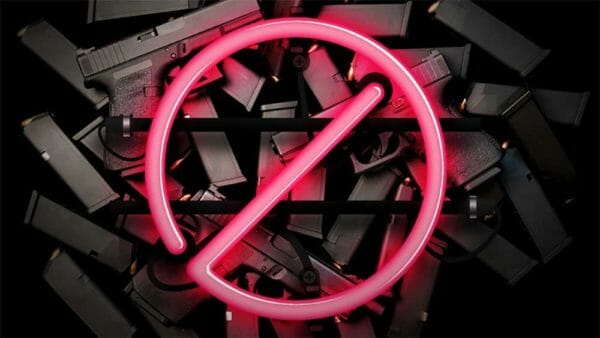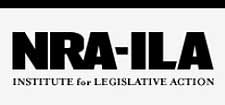Opinion

Fairfax, VA – -(Ammoland.com)- Virginia Governor Ralph Northam has announced last week that he will convene a special session of the state legislature in order to push a package of radical gun control legislation.
Early reports state that the package will include a ban on the standard capacity firearm magazines used by tens of millions of law-abiding gun owners. The details of Northam’s plan have yet to be released, but such bans in other states and the failed federal ban have often targeted magazines with a capacity greater than 10 rounds. There are hundreds of millions of magazines with a capacity greater than 10 rounds that are lawfully-possessed and lawfully used every day in the U.S.
Some have suggested that Northam’s high-profile attack on gun owners is motivated by an eagerness to distractfrom he and Lt. Governor Justin Fairfax’s own problems in the wake of scandals involving a racist yearbook photoand alleged sexual misconduct. Whatever Northam’s motive, it is clear that the evidence does not support his proposed magazine ban.
Banning standard capacity magazines does not reduce violent crime
In 2018, the Rand Corporation released a comprehensive study that surveyed the available research on several gun control policies. In the study, Rand researchers sought to determine “How Bans on the Sale of Assault Weapons and High-Capacity Magazines Affect Gun Use Outcomes.” The study stated,
We found no qualifying studies showing that bans on the sale of assault weapons and high-capacity magazines decreased any of the eight outcomes we investigated.
The “gun use outcomes” studied included “violent crime.”[1]
A 2004 U.S. Department of Justice-funded study of the 1994 “assault weapons” ban, which also banned magazines with a capacity greater than 10 rounds, determined,
Should it be renewed, the ban’s effects on gun violence are likely to be small at best and perhaps too small for reliable measurement.[2]
A 1997 U.S. Department of Justice-funded study of the federal ban acknowledged,
At best, the assault weapons ban can have only a limited effect on total gun murders, because the banned weapons and magazines were never involved in more than a modest fraction of all gun murders.[3]
There is no good evidence that banning standard capacity magazines reduces mass shootings or mass shooting casualties
In the 2018 Rand study that concluded “no qualifying studies showing that bans on the sale of assault weapons and high-capacity magazines decreased any of the eight outcomes we investigated,” one of the outcomes studied was “mass shootings.”[4]
The 2004 U.S. Department of Justice-funded study of the 1994 “assault weapons” ban found that,
relatively few attacks involve more than 10 shots fired.
and that,
it is not clear how often the outcomes of gun attacks depend on the ability to fire more than 10 shots (the current limit on magazine capacity) without reloading.[5]
The 1997 U.S. Department of Justice-funded study of the federal ban noted,
We were unable to detect any reduction to date in two types of gun murders that are thought to be closely associated with assault weapons, those with multiple victims in a single incident and those producing multiple bullet wounds per victim.[6]
A 2016 article published in Justice Research and Policy, examined 23 mass shootings with six or more victims that occurred between 1994 and 2013 and in which the perpetrator used one or more magazines with a capacity of more than 10 rounds. The study determined,
In sum, in nearly all [large capacity magazine]-involved mass shootings, the time it takes to reload a detachable magazine is no greater than the average time between shots that the shooter takes anyway when not reloading. Consequently, there is no affirmative evidence that reloading detachable magazines slows mass shooters’ rates of fire, and thus no affirmative evidence that the number of victims who could escape the killers due to additional pauses in the shooting is increased by the shooter’s need to change magazines.[7]
In the aftermath of the 2007 shooting at Virginia Tech, Governor Tim Kaine convened a review panel to study the tragedy. The perpetrator had used several magazines with a capacity greater than 10 rounds in the shooting. The report stated,
The panel also considered whether the previous federal Assault Weapons Act of 1994 that banned 15-round magazines would have made a difference in the April 16 incidents. The law lapsed after 10 years, in October 2004, and had banned clips or magazines with over 10 rounds. The panel concluded that 10-round magazines that were legal would have not made much difference in the incident. Even pistols with rapid loaders could have been about as deadly in this situation.[8]
Gov. Northam’s proposal would not have prevented the Virginia Beach shooting
Following the shooting, Virginia Beach Police Chief James Cervera was interviewed by George Stephanopoulos on ABC. Chief Cervera noted,
As far as more legislation on gun issues. I’m a member of Major City Chiefs, we did publish something about a year and a half ago. I don’t think most of that would have mattered in this particular case. We do have the Second Amendment it is very stringent for our country. In this particular case the weapons were obtained legally. Everything was done in a legal manner by this individual.[9]
In the wake of the Virginia Beach shooting, National Tactical Officers Association Executive Director Thor Eells told National Public Radio, “The type of magazine means nothing to the potential threat.”[10]
Law-abiding Virginia gun owners are being scapegoated by anti-gun politicians in their attempt to hurriedly force through ineffective gun control measures. Such imprudent action should never be tolerated. Given the alleged conduct of the governor and lieutenant governor that has recently come to light, their impatience with the normal legislative process is all the more suspicious.
- [1] The Effects of Bans on the Sale of Assault Weapons and High-Capacity Magazines, Rand Corporation, March 2, 2018.
- [2] Christopher S. Koper, An Updated Assessment of the Federal Assault Weapons Ban: Impacts on Gun Markets and Gun Violence, 1994-2003, Report to the National Institute of Justice, June 2004.
- [3]Jeffrey A. Roth, Christopher S. Koper, Impact Evaluation of the Public Safety and Recreational Firearms Use Protection Act of 1994, Urban Institute, March 13, 1997.
- [4] The Effects of Bans on the Sale of Assault Weapons and High-Capacity Magazines, Rand Corporation, March 2, 2018.
- [5] Christopher S. Koper, An Updated Assessment of the Federal Assault Weapons Ban: Impacts on Gun Markets and Gun Violence, 1994-2003, Report to the National Institute of Justice, June 2004.
- [6] Jeffrey A. Roth, Christopher S. Koper, Impact Evaluation of the Public Safety and Recreational Firearms Use Protection Act of 1994, Urban Institute, March 13, 1997.
- [7] Gary Kleck, Large-Capacity Magazines and the Casualty Counts in Mass Shootings: The Plausibility of Linkages, Justice Research and Policy, 2016, Vol. 17(1) 28-47.
- [8] Mass Shootings at Virginia Tech April 16, 2007: Report of the Review Panel Presented to Governor Kaine, Commonwealth of Virginia, August, 2007.
- [9] 1-on-1 with Virginia Beach police chief, ABC News, June 2, 2019.
- [10] Martin Kaste, Do Extended Magazines Facilitate Mass Shootings?, National Public Radio, June 4, 2019.

About:
Established in 1975, the Institute for Legislative Action (ILA) is the “lobbying” arm of the National Rifle Association of America. ILA is responsible for preserving the right of all law-abiding individuals in the legislative, political, and legal arenas, to purchase, possess and use firearms for legitimate purposes as guaranteed by the Second Amendment to the U.S. Constitution. Visit: www.nra.org
